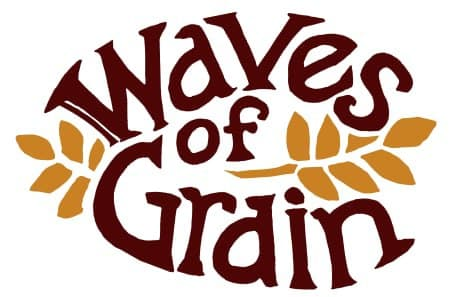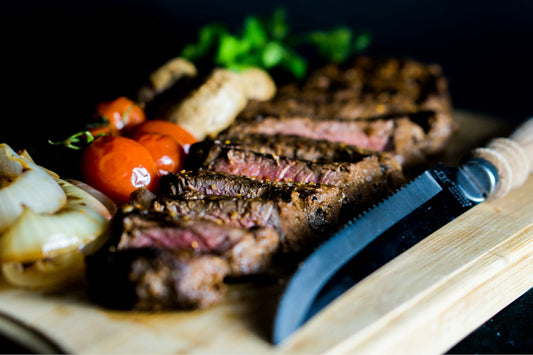To relax in the evening, my wife watches films and TV series on her France channel – that is, when she’s not watching her German, Italian, or Spanish channels. She’s done this for many years. One particular evening about 10 years ago, she looked up from her laptop, blue light from the screen etching her expression with shadows, showing a mixture of rage, envy, and some kind of mystical revelation.
“What’s happening?” I asked out of concern, but mostly, knowing her, in trepidation.
“Why the f___ have we never made a clafouti?” She demanded.
I stated, as if answering definitively, end of discussion, “What the f__ IS a clafouti.”
She was not to be dissuaded. Despite the late hour, ingredients were quickly assembled, the oven pre-heating to 450°. I found myself standing at the counter, whisk blurring in my hand, as she added eggs (like 8 of them), milk, cream, vanilla, tiny amounts of rice flour and sugar. Before I could finish blending, she had cut a big slab of butter and dropped it into our deep-sided, cast-iron skillet, which she then slid into the heating oven. A few minutes later, butter melted, she pulled it out and had me pour in enough batter to cover the bottom of the now hot pan – about 1/3 of an inch deep. She popped it back in the oven and explained that this would serve as the crust of the clafouti.

Once the crêpe-like batter had stiffened up, out it came again. We arranged fruit on the crust, enough so that every slice would have fruit, but not so much that pieces of fruit were touching. We made that first one with apricot halves from our tree, it being summer. A week later we made another with tart cherries, which we immediately recognized as the ultimate, for texture and flavor. After the fruit is laid onto the crust, the remaining batter goes in and the pan is returned to the now very hot oven. Note: this pic show about twice as much fruit as you need, oops, but that's how I like it.

After another 15 or 20 minutes, the clafouti is done. It's a bit puffy and – like a soufflé – wants to be eaten at once. The bottom crust is crispy and buttery. The top layer is more like custard suffused with fruit. Since we don’t measure anything, each production is slightly different, ranging from milky custard if very little flour, to a Yorkshire pudding if more. Mary’s preference is a firm, eggy custard. We’ve served it to many guests since then, as either a meal or as a dessert.
We like the tart cherries so much that our yard is now full of them. Montmorency (yep, French) trees produce the best fruit, but we have other varieties as well, to ensure pollination. At our home in Longmont, Colorado the tart cherries produce fruit every year. Our apples, pears, plums, apricot, peaches, and sweet cherries are less reliable. After commenting about this to another farmer, we learned that “100 years ago Longmont was the tart cherry capitol of the US.” There is an old cannery building in our neighborhood that shipped out rail cars to all corners, filled with #10 cans of tart cherries. That building is now condominiums, but tart cherries still like growing, blooming, and fruiting here.
If you are lucky enough to have a tree or know someone who does, you can pit them, pack them tight, and freeze them. But that makes a brick that you have to thaw. The best way to freeze them is loose on a cookie sheet. Once frozen, then put into a tub or freezer bag. That way, you can use just as many as needed without thawing the whole lot. And, you can put loose frozen cherries right into the clafouti. One trick we learned when using stone fruits in clafouti is to leave them whole. For instance, with the tart cherries, just take the stem off, don’t remove the pit. You can freeze them this way, too.

Cooking them with the stones inside will imbue both fruit and custard with the delicious flavor and aroma of almonds. Almonds are a stone fruit, too, don'tcha know, a cousin to cherries. A secondary benefit to eating clafouti with pits in is that it forces us to slow down and savor the dish, which otherwise disappears all too quickly. If the fruit has already been pitted, like with the frozen BigBs tubs we sell through Waves of Grain (see pic above), go ahead and add a small amount of almond extract to the egg mixture. Try it!
Another hint: eat the whole thing. Enjoy clafouti hot out of the oven, don’t wait for it to cool. Like a soufflé, it collapses as it cools. Can’t finish it? OK, put it in the fridge – the sooner, the better. Later, eat it cold, not reheated.
People are generally surprised by clafouti’s deceptive simplicity. If we tell people there is almost no sugar in it, they expect they won’t like it but are quickly won over. In order of my preference, the best fruits for clafouti are tart cherries, plums, sweet cherries, apricots, pears, blackberries, raspberries, peaches, nectarines.




